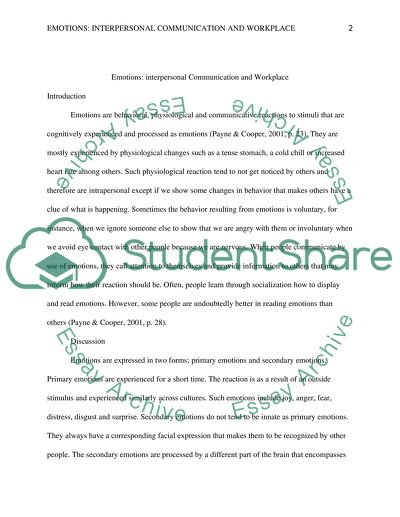Cite this document
(Emotions - Interpersonal Communication and Workplace Essay, n.d.)
Emotions - Interpersonal Communication and Workplace Essay. Retrieved from https://studentshare.org/psychology/1664542-describe-the-role-of-emotions-in-interpersonal-communication-and-analyse-their-implications-for-workplace-interactions
Emotions - Interpersonal Communication and Workplace Essay. Retrieved from https://studentshare.org/psychology/1664542-describe-the-role-of-emotions-in-interpersonal-communication-and-analyse-their-implications-for-workplace-interactions
(Emotions - Interpersonal Communication and Workplace Essay)
Emotions - Interpersonal Communication and Workplace Essay. https://studentshare.org/psychology/1664542-describe-the-role-of-emotions-in-interpersonal-communication-and-analyse-their-implications-for-workplace-interactions.
Emotions - Interpersonal Communication and Workplace Essay. https://studentshare.org/psychology/1664542-describe-the-role-of-emotions-in-interpersonal-communication-and-analyse-their-implications-for-workplace-interactions.
“Emotions - Interpersonal Communication and Workplace Essay”, n.d. https://studentshare.org/psychology/1664542-describe-the-role-of-emotions-in-interpersonal-communication-and-analyse-their-implications-for-workplace-interactions.


